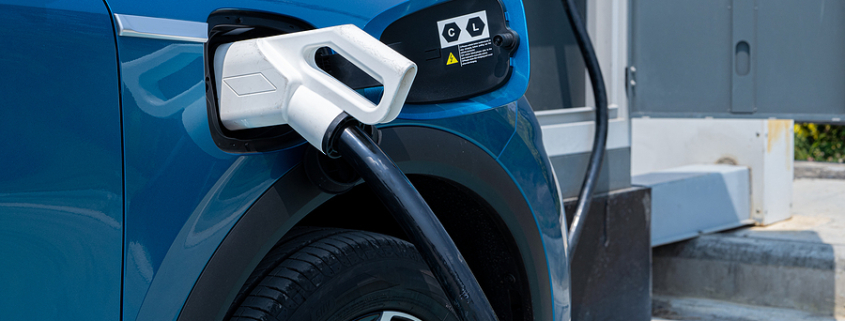Car Accidents Involving Electric Vehicles: Unique Challenges and Safety Concerns
Hybrid and electric vehicles are becoming increasingly popular on Alabama roads. This is especially true against the backdrop of rising gas prices. While there are numerous benefits to driving an EV, there are also unique risks and challenges involved for the driver and others on the road. If you were injured in an accident involving an electric vehicle, you should retain the services of a qualified car accident attorney.
Here are some of the important safety concerns that are unique to electric vehicles on Alabama roads.
Lack of Vehicle Sound
Nobody really likes loud vehicles. Based on this, fuel-operated vehicles with petroleum engine that make a sound on the road while running is useful in alerting pedestrians and bicyclists of any nearby cars. While there are horns in EVs, drivers don’t always feel the necessity to honk just because they are nearing a pedestrian.
Electric vehicles don’t make any sound. They don’t allow pedestrians to track the movements of an approaching vehicle without really having their eyes on the car. The silent operation can result in potentially deadly consequences when the car is traveling at low speeds. In fact, the US National Highway Transportation Safety Administration (NHTSA) has made it mandatory for all-electric vehicles to emit an audible warning when traveling at 18.6 mph or less.
This rule is expected to prevent at least 2,400 car accidents each year. Unfortunately, even though the feature has been added to the newer models, there are still millions of cars on the road that lack this. Pedestrians and cyclists can easily get in the way of an electric car without realizing it.
Electric Vehicles are Heavier
Electric vehicles are heavier than their traditional gas counterparts. This is because of larger overall proportions and slightly longer wheelbase. While the additional weight offers better protection to the occupants inside the vehicle, it can cause catastrophic consequences to victims in the event of a crash.
Heavier vehicles technically have a larger impact force. They are harder to maneuver and stop in a crash situation. This difference can cause severe injuries to cyclists and pedestrians.
Risks of Autopilot and FSD in EVs
Tesla’s Autopilot and Full Self-Driving (FSD) among other active safety features are not yet ready for the road. The company recently allowed its users to beta test its latest iterations without any controlled conditions or safety training. In fact, in a recent update, Tesla cars were found to have problems with the auto-sensing technology. The fact remains that autonomous driving features are not proven to be formally authorized by the NHTSA or universally safe.
Active crash prevention features, such as forward emergency braking and lane keep assist have been shown to reduce the risks of a collision. However, this is only when they are used properly. Careless, misinformed, or irresponsible drivers frequently misuse these features in unintended ways that add to the risk of accidents.
There have been frequent reports of drivers falling asleep at the wheel with Autopilot running. In a recent crash, eyewitnesses and investigators allege that there was no one behind the wheel causing the vehicle to run off the road and killing both occupants after striking a tree. The potential for software errors, abuse, and misuse creates unique dangers that don’t exist in other vehicles.
Exploding and Re-igniting Batteries
The biggest concern surrounding electric vehicle accidents is that their batteries have a unique risk of setting on fire and exploding. Electric vehicles come with their own sets of concerns. These vehicles use lithium-ion batteries with a reputation for spontaneous explosion after overheating. This is true even when they are installed in regular consumer electronics.
The same sort of battery technology is used in most electric vehicles. In most cases, the entire floor of the vehicle is lined with these battery cells. When lithium-ion battery components get overheated or damaged in an accident, they experience a chain reaction known as thermal runaway. To add to the risk, batteries that have been seriously damaged or burned can retain heat for a number of days after impact.
There have been instances of EV batteries spontaneously reigniting even after the initial fire was doused and the car removed from the crash site. Potential hazards of battery fires include gas discharges, explosions, and injury to first responders.
Liability in an Electric Vehicle Accident
If you or someone you love suffers an injury in an EV accident, you may be able to hold one or more of the following parties accountable:
- Negligent driver
- Car manufacturer for defective parts
- Repair shop for improper repairs
Speak with a car accident attorney as soon as possible after a crash to take the necessary steps for protecting your legal interests and maximizing financial recovery. This is someone who has been through the legal battlefields before and knows how to deal with chaotic situations and walk away safely.
Get a Proven and Capable Personal Injury Lawyer on Your Side
The attorneys at the law firm of Frank M. Wilson are here to help you obtain the compensation and justice you deserve. We will assign liability and negotiate with the other side’s insurance company on your behalf, while meticulously preparing to go to trial if you do not receive a fair settlement offer. Schedule your free case review with our lawyers today. Call us at (334) 420-2931 or contact us online.





Leave a Reply
Want to join the discussion?Feel free to contribute!